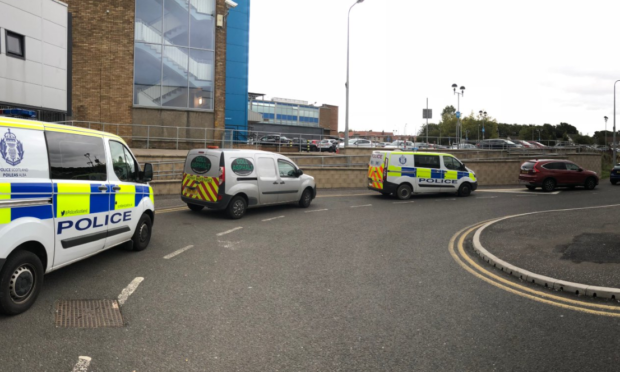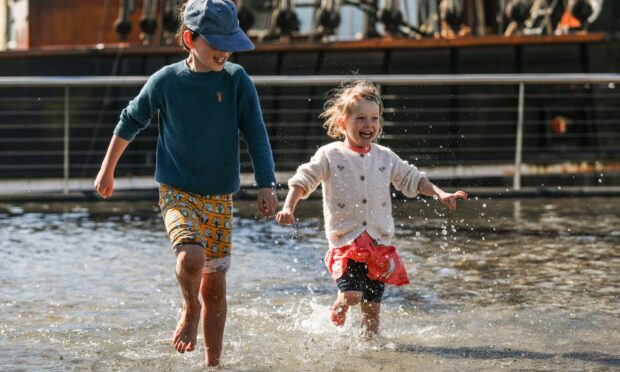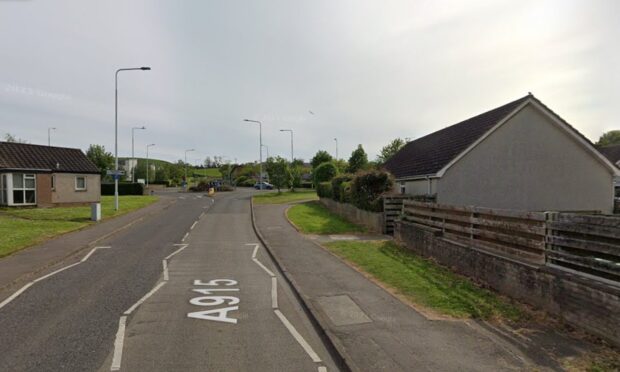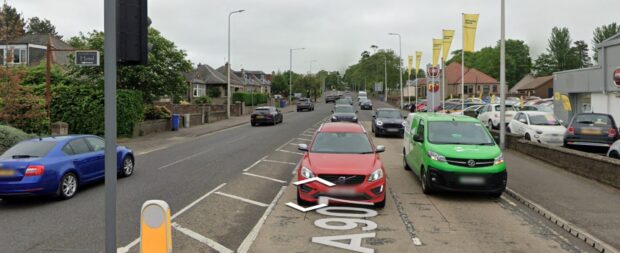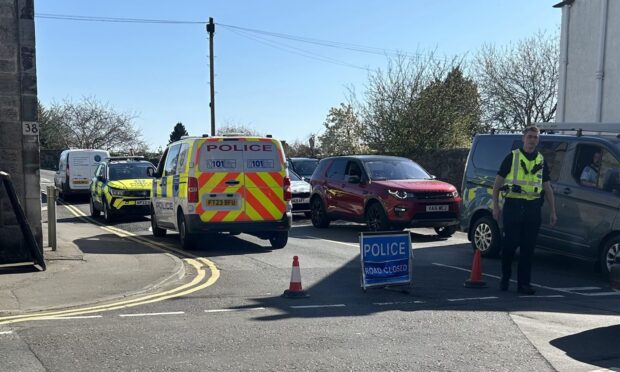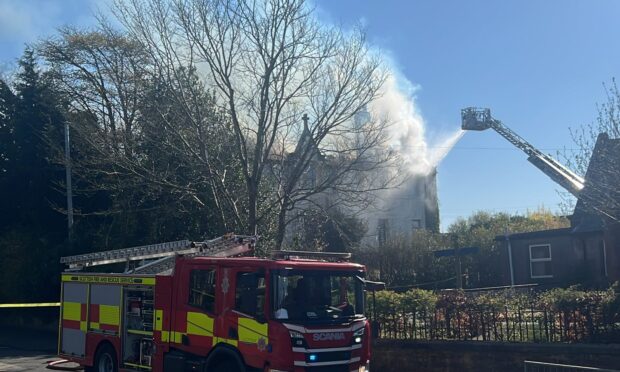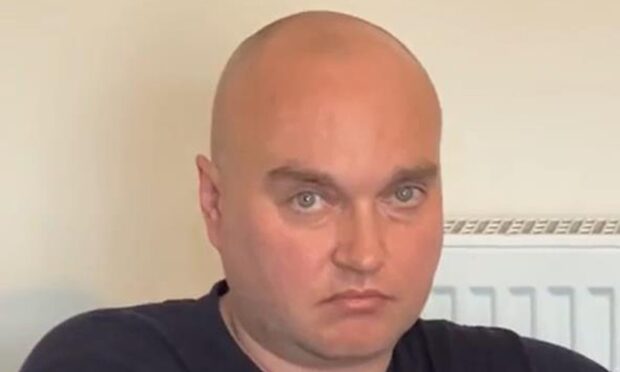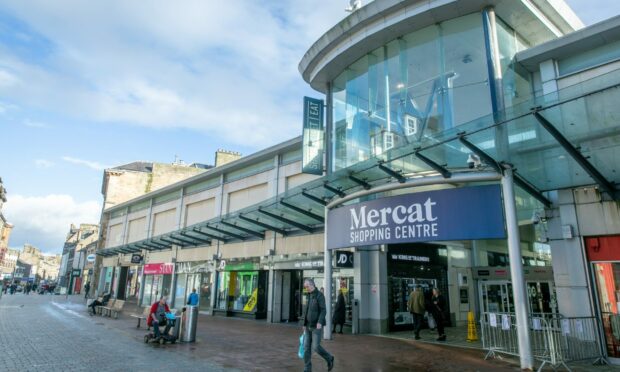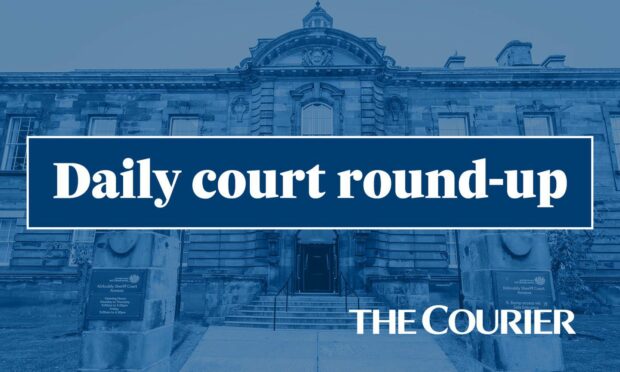A snapshot of several police vehicles parked outside Victoria Hospital has been used to illustrate time lost by officers waiting at A&E departments.
The photograph showed four police vans outside the entrance to the emergency department at the Kirkcaldy hospital.
Two-and-a-half hours later one of the vans had left but had been replaced by two squad cars.
The scene captured on a Saturday afternoon was not unusual, according to the Scottish Police Federation, who said officers regularly spent their time waiting in hospitals rather than on the streets.
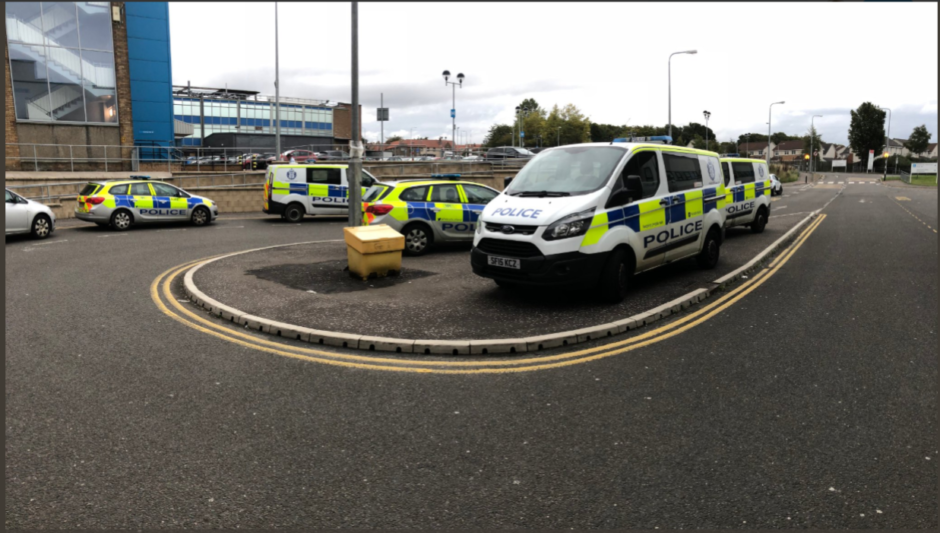
David Hamilton, federation vice-chairman, said: “In recent research within two of Police Scotland’s 13 local policing divisions, staff spent 1,500 hours [per year] in A&E departments.
“That’s roughly the equivalent of 12 police officers off the street for a month, in just two divisions.
“Each visit took on average five hours.”
He said that the public would “not believe” by the amount of time police spent dealing with mental health cases and claimed the force sometimes took people to hospital where the ambulance response had been downgraded.
He said: “The highest concentration of police vehicles is not at police stations, it’s at hospital A&E car parks.”
Some hospital visits were unavoidable, he said, for example where a person being taken into custody required medical attention.
But he added: “We are the service of last resort.
“The frustration is that other services take advantage of that, knowing we can’t walk away.
“This is turning police car cages into ambulances.”
Claire Baker, Labour MSP for Mid Scotland and Fife, said: “Thanks to decisions taken by both the UK and Scottish Governments, public services are struggling and it is often the police who have to be the safety net.
“The Scottish Police Federation have recently reported that officers do not have the capacity to attend all urgent calls, and the force is facing multiple different pressures.
“Sitting in A&E for up to five hours will not strike many as a valuable use of an officer’s time.”
Deputy Chief Constable Will Kerr, for local policing, said: “The demands on our service are changing and over 80 per cent of calls we receive are not related to crime.
“People call in distress, many are vulnerable and people don’t always know where they are or what services they need. We have seen a particular increase in concern for person calls over the past two years.
“We are working closely with partners to ensure we can deliver the most appropriate response to meet the needs of the caller.
“We are also looking at ways to transform the manner in which we respond to calls from the public, taking into account threat, risk, harm and vulnerability at that first point of contact.”
A spokesman for the Scottish Ambulance Service insisted calls were not downgraded and an ambulance would always be sent where urgent medical attention was needed.
He said: “In cases where we have been called but the patient doesn’t require an emergency response we will provide appropriate advice.
“We prioritise calls to ensure we respond to patients presenting with life threatening conditions first.”
And to demonstrate the point.
Photo1- A&E at Queen Victoria hospital in Kirkcaldy. at 3.15pm on a Saturday afternoon-hardly a busy time.
Photo 2- 2 and a half hours later- one van away, replaced by another 2 police cars… pic.twitter.com/wKqM7nylhX— David Hamilton (@DvdHmltn) December 4, 2018
